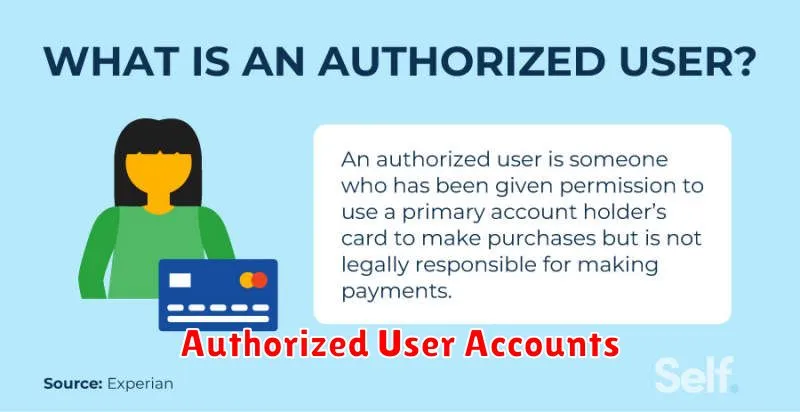Building credit is essential for financial health, enabling access to loans, mortgages, and even better insurance rates. Many assume a credit card is the only path to building credit, but this isn’t true. There are several effective strategies to build credit without a credit card, allowing you to establish a positive credit history and unlock financial opportunities, even if you’re wary of traditional credit cards or haven’t qualified yet. This article will explore proven methods to build credit responsibly and effectively without a credit card.
Discover the power of building credit through alternative means, such as credit-builder loans, secured credit cards, becoming an authorized user, and leveraging rent and utility payments. Learn how to navigate the credit-building process without a credit card and establish a strong financial foundation. We’ll delve into the specifics of each method, outlining the benefits and potential drawbacks to help you choose the best approach for your individual circumstances. Start your journey towards a healthy credit score today, even without a credit card.
Is It Possible to Build Credit Without Cards?
Yes, it is possible to build credit without relying on credit cards. While credit cards are a common tool, other options exist for establishing and improving your credit history. Credit-building loans specifically designed for this purpose allow you to borrow a small amount and repay it in installments, with your payment activity reported to credit bureaus. Secured credit cards, where you provide a cash deposit as collateral, offer another avenue. Additionally, becoming an authorized user on someone else’s credit card can contribute to your credit history, provided the account is managed responsibly.
Beyond these traditional methods, several alternative approaches are gaining traction. Rent reporting services allow you to have your on-time rent payments included in your credit reports. Similarly, some utility and bill payment services report consistent payment histories to credit bureaus. Credit-builder apps offer programs designed to help establish or improve credit by tracking positive financial behaviors.
Regardless of the chosen method, responsible financial behavior is key. Consistent, on-time payments are crucial for building positive credit history. Monitoring your credit reports regularly allows you to track progress and identify any potential errors. It’s also important to remember that building credit takes time and patience. By utilizing these alternative methods and practicing responsible financial habits, you can establish a strong credit foundation without relying solely on credit cards.
Alternative Credit-Building Methods

Establishing a strong credit history is crucial for accessing financial products and services. While traditional credit cards and loans are common ways to build credit, alternative methods exist for those who are new to credit or are rebuilding their credit scores. These alternative methods can offer a pathway to establishing positive credit without requiring a pre-existing strong credit profile.
Credit-builder loans are specifically designed to help individuals establish or improve their credit. These loans work differently than traditional loans. The borrowed amount is held in a secured account while the borrower makes regular payments. These payments are then reported to credit bureaus, helping to build a positive payment history. Upon successful completion of the loan term, the borrower gains access to the funds. Secured credit cards are another valuable tool. These cards require a security deposit which acts as the credit limit. Responsible usage, including making on-time payments and maintaining a low credit utilization ratio, helps build a positive credit history. Authorized user status on an existing credit card account can also benefit an individual’s credit. The primary cardholder adds the individual as an authorized user, and the account activity is reported on the authorized user’s credit report. However, it’s crucial to ensure the primary cardholder maintains responsible credit card practices.
In addition to these methods, other options include reporting rent and utility payments to credit bureaus through specific services. While not all credit scoring models consider these payments, some do, which can contribute to building credit. Before pursuing alternative credit-building methods, carefully research and choose reputable providers. Understand the terms and conditions, including fees and reporting practices, to make informed decisions that align with your financial goals. Remember to practice responsible financial habits such as making timely payments and keeping track of your credit utilization to build a positive credit history over time.
Using Credit-Builder Loans
Credit-builder loans are a unique financial tool designed specifically to help individuals establish or improve their credit history. These loans work differently than traditional loans. Instead of receiving the loan amount upfront, the lender deposits the funds into a secured savings account or certificate of deposit (CD). You then make regular monthly payments on the loan, and these payments are reported to the credit bureaus. Once the loan is fully repaid, you gain access to the funds, plus any accrued interest. Consistent, on-time payments are crucial for building positive credit with a credit-builder loan.
These loans can be especially beneficial for those new to credit or rebuilding after past financial challenges. Because the loan is secured by the savings account, they pose less risk to lenders, making them easier to qualify for even with limited or damaged credit. Loan amounts are generally smaller than conventional loans and interest rates can vary, so it’s essential to shop around and compare offers from different lenders. Consider factors like loan term, fees, and the lender’s reporting practices to the credit bureaus when selecting a credit-builder loan.
While credit-builder loans are a valuable tool, they are just one piece of the credit-building puzzle. Responsible financial habits, such as paying all bills on time, maintaining a low credit utilization ratio, and avoiding unnecessary debt, are also essential for establishing and maintaining good credit. Credit-builder loans should be seen as a stepping stone to accessing more traditional credit products in the future.
Reporting Rent and Utilities
Accurately reporting rent and utility expenses is crucial for various purposes, including budgeting, tax filing, and financial analysis. Rent should be reported as the total amount paid to your landlord each month, excluding any additional fees for services like parking or pet rent. Utility expenses encompass costs associated with essential services such as electricity, gas, water, and internet. Maintaining detailed records of these expenditures, including receipts and invoices, is highly recommended for proper documentation.
For budgeting purposes, tracking rent and utilities allows individuals to monitor their spending and allocate funds effectively. When filing taxes, accurate reporting of these expenses can potentially lead to deductions or credits, depending on eligibility. From a financial analysis perspective, understanding these costs allows individuals to assess their overall financial health and identify areas for potential savings.
Several methods exist for tracking and reporting rent and utilities. Using a dedicated budgeting app or spreadsheet software can streamline the process and provide a clear overview of expenditures. Alternatively, maintaining a physical file with receipts and invoices offers a tangible record. Regardless of the chosen method, consistency is key to ensuring accurate and reliable reporting.
Authorized User Accounts

An authorized user account allows another person to use your credit card. This can be a useful tool for building credit, especially for young adults or those with limited credit history. The primary cardholder is ultimately responsible for all charges made on the account, including those made by the authorized user. It is important to choose an authorized user wisely and discuss spending limits and expectations beforehand.
Adding an authorized user can have both positive and negative impacts on your credit score. Positive impacts can include improved credit utilization if the credit limit remains the same and the authorized user’s spending is low. Negative impacts can occur if the authorized user mismanages the account, resulting in late payments or high balances. It’s crucial to monitor the account activity regularly and communicate with the authorized user about responsible credit card use.
Before adding an authorized user, contact your credit card issuer to understand their specific policies. Some issuers report authorized user activity to the credit bureaus, while others do not. It’s essential to clarify this beforehand, especially if the goal is to help the authorized user build their credit history. Also, inquire about any fees associated with adding an authorized user.
Secured Cards as a Bridge Option
Secured credit cards can be a valuable tool for individuals looking to build or rebuild their credit history. They work similarly to traditional credit cards, but require a security deposit that typically equals your credit limit. This deposit minimizes the risk for the lender, making secured cards more accessible to those with limited or damaged credit. By using a secured card responsibly and making timely payments, you demonstrate positive credit behavior, which is reported to the credit bureaus and can help improve your credit score over time.
One of the key benefits of secured cards is their ability to act as a bridge to unsecured credit products. As you establish a positive payment history with your secured card, many issuers offer a path to “graduate” to an unsecured card. This transition typically involves returning your security deposit and converting your existing account or issuing a new unsecured card. The graduation process and timeline vary depending on the card issuer and your credit performance.
Choosing the right secured card involves considering factors like fees, APR, and graduation requirements. Carefully review the terms and conditions of different cards to find one that aligns with your financial goals. Look for cards with low annual fees, reasonable APRs, and a clear path to transitioning to an unsecured card. Utilizing a secured card responsibly is a proactive step towards achieving better credit health and accessing a wider range of financial products in the future.
Tracking and Improving Score Over Time
Tracking your score over time is crucial for identifying areas of strength and weakness. Whether it’s for academics, sports, or any other performance-based activity, consistent monitoring allows you to understand your progress and make necessary adjustments. Keep a detailed record of each attempt, including the date, the specific area of focus, and the achieved score. This data provides a valuable foundation for analyzing trends and setting realistic goals.
After gathering sufficient data, analyze your performance to pinpoint areas for improvement. Look for patterns in your scores. Are there specific topics or skills where you consistently struggle? Identifying these areas allows you to focus your efforts and develop targeted strategies. For example, if you’re tracking your test scores and notice a recurring weakness in a particular subject, you can dedicate more time to studying that subject or seek additional help from a tutor or teacher.
Once you’ve identified your weaknesses, develop a plan to address them. This could involve setting specific, measurable, achievable, relevant, and time-bound (SMART) goals. Break down larger goals into smaller, manageable steps. Regularly review your progress and adjust your plan as needed. Celebrate your achievements along the way to maintain motivation and stay focused on continuous improvement.

